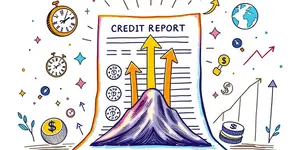
In a world where personal data flows freely, placing a credit freeze has become a go-to strategy for many. Yet, while freezes can fortify your credit file, they aren’t a cure-all. Understanding their reach and limits empowers you to build a truly resilient defense against identity theft.
A credit freeze, sometimes called a security freeze, blocks new credit inquiries by preventing lenders from accessing your credit report without your say-so. All three major bureaus—Equifax, Experian, and TransUnion—offer this service for free, and it can be activated online, by phone, or via mail.
Once in place, a freeze acts like a padlock on your credit file. Prospective creditors must obtain your personal PIN or password to lift the freeze temporarily, making it far harder for criminals to open accounts in your name.
New account fraud is one of the fastest-growing forms of identity theft. According to industry data, criminals often use stolen personal information to open credit cards or loans, leaving victims with unexpected debts and ruined credit scores.
By placing a freeze, you deploy one of the most effective tools in your anti-fraud toolkit. Without access to your credit report, thieves hit a dead end when they try to:
Most legitimate creditors and lenders cooperate with security freezes, which means you hold the keys to your own financial gate.
While credit freezes are powerful, they do not address every threat. Thieves can still exploit existing accounts if they gain access to your active card numbers or bank information.
Moreover, freezes won’t prevent mistakes or errors on your credit report. Data entry glitches, misattributed debts, or mismatches by creditors can still mar your record, and a freeze offers no direct recourse.
Consider these key limitations:
No single solution can fully protect your identity. Experts recommend combining credit freezes with other measures to close gaps and stay ahead of fraudsters.
Essential complementary protections include:
By using multiple safeguards, you create multiple layers of protection that work in concert to detect and deter various attack vectors.
Data and trends reveal why a holistic approach is essential. Below is a snapshot of recent figures that underscore the scale of the challenge:
Despite the sharp rise in consumer freezes over the past decade, overall identity theft complaints include many incidents a freeze can’t forestall—underscoring the need for vigilance beyond locking your credit file.
Placing and lifting freezes requires planning. Each bureau provides its own PIN or passcode, and you must enter it whenever you want to apply for credit. While this adds a step to your lending process, it also places control firmly in your hands.
To streamline the experience, consider:
With vigilant personal data security, the freeze becomes a dynamic tool rather than a static barrier.
Some experts advocate for unified, national credit freeze legislation to simplify consumer access and reduce jurisdictional inconsistencies. A standardized system could drive wider adoption and streamline the process across bureaus.
Meanwhile, corporations and financial institutions can bolster their own defenses through enhanced verification protocols and faster breach notifications.
Consumers, too, hold power through awareness. By staying informed about evolving threats and regularly auditing your financial footprint, you can adapt your strategy to the changing landscape.
A credit freeze is a potent shield against new account fraud, but it’s only one piece of the puzzle. Its true value emerges when paired with fraud alerts, monitoring services, and disciplined account management.
Embrace a mindset of continuous identity protection—one where layered tools and proactive habits blend into a unified defense. In doing so, you transform a simple freeze from a reactive measure into a cornerstone of long-term security.
References













